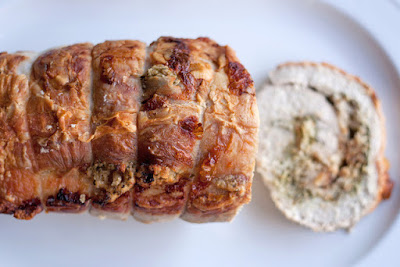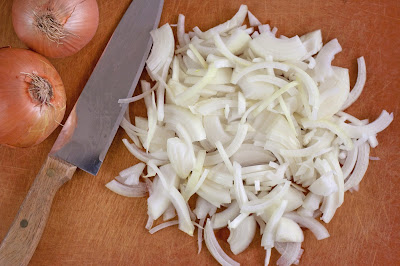I can do without the frenzied shopping that threatens to swallow up
Christmas, but please don’t take away the home cooking it inspires. Nothing
compares to misshapen cookies enveloped with love or quick-breads
haloed with spice. A mug of hot
chocolate prepped by a friend will warm me up faster than a pair of fancy wool gloves. And sitting down to a
carefully roasted lamb or pork roast? That may bring on cartwheels!
How to Tie a Roast
Place the roast on a cutting board with an end facing you (as opposed to having the ends facing left and right).
Hold a long length of string in both hands, gripping an end with one hand. Slide the string under the roast until it is an inch and a half from the end closest to you.
Tie a simple knot around the roast, leaving an inch and a half of string on the short end.
Slide the string up the roast by an inch and a half and hold it in place with your thumb.
Loop the rest of the string under the roast, creating a right angle in the string under your thumb.
Loop the end of the string under the right angle and pull to tighten it.
Repeat steps 4 to 6 to create a simple net all the way up the roast.
When you reach the end, lead the string down and over the end of the roast and turn it over.
Lead the string down, through the middle of the roast, pulling it over and under each piece of string already hugging the roast width wise.

Roast away!
















































